Bible Manuscript Evidence
 From Conservapedia
From Conservapedia According to Josh McDowell in More Than a Carpenter (1977), the Bible, and particularly the New Testament, are the best-evidenced documents by manuscript evidence in antiquity. According to McDowell,
| “ | "When it comes to the manuscript authority of the New Testament, the abundance of material is almost embarrassing in contrast. After the early papyri manuscript discoveries that bridged the gap between the times of Christ and the second century, an abundance of other MSS came to light. Over 20,000 copies of New Testament manuscripts are in existence today. The Iliad has 643 MSS and is second in manuscript authority after the New Testament."[1] | ” |
Contents
Old Testament[edit]
List of Old Testament manuscripts[edit]
The following is a list of major Old Testament manuscripts older than 200 A.D.:
KEY:
- DSS: Dead Sea Scroll
| Name | Date | Content | Type | Institution | |
|---|---|---|---|---|---|
| Khirbet Qeiyafa Pottery[2] | 1000 B.C. | lines similar to Isaiah 1:17, Psalms 72:3, and Exodus 23:3 | Inscription | ||
| KH1 & KH2 [Ketef Hinnom Amulets][3] | 650 B.C. | Numbers 6:24-26, Deuteronomy 7:9 | Inscription | Israel Museum, Jerusalem | |
| 1QIsa(b) [Great Isaiah Scroll][4] | 350-100 B.C. | Book of Isaiah | DSS | ||
| 1QIsa(a) [Great Isaiah Scroll] | 335-100 B.C. | Book of Isaiah | DSS | ||
| Dead Sea Scrolls (Other)[5] | 250 B.C.-65 A.D. | entire Old Testament | DSS | ||
| Nash Papyrus[6] | 150 B.C. | Exodus 20:2; Deuteronomy 5:6; 6:4-9 | DSS | ||
| Papyrus Fouad 266 | 125 B.C. | Deuteronomy 23:24(26)–24:3; 25:1–3; 26:12; 26:17–19; 28:31–33; 27:15; 28:2 | Uncial | ||
| 11Q1 [Leviticus Scroll] | 100 B.C. | Leviticus 4, 10, 11, 13, 14, 16, 18-22 | DSS | ||
| 11Q5/11QPs-a) [Qumran Psalms Scroll][7] | 40 A.D. | Psalms 93, 101-105, 109-110, 113-151, 154-155 | DSS | ||
| P.Oxy.L 3522[8] | 50 A.D. | Job 42:11-12 | Papyrus | ||
| P.Oxy.LXV 4443[9] | 100 A.D. | Esther 6-7 | Papyrus | ||
| Greek John Rylands Papyrus 458 | 125 A.D. | Deuteronomy 23:24(26)–24:3; 25:1–3; 26:12; 26:17–19; 28:31–33; 27:15; 28:2 | Uncial | ||
| P.Oxy.IV 656 | 150 A.D. | Gen 14:21–23; 15:5–9; 19:32–20:11; 24:28–47; 27:32–33, 40–41 | Uncial | ||
| Wadi Murabba'at Scrolls[10] | 165 A.D. | Minor Prophets (all books) & fragments of Genesis, Deuteronomy, and Isaiah. | DSS | ||
| l | |||||
| Sources: | |||||
| * Papyri.info, Oxyrhynchus , Columbia University[11] | |||||
| * Stephen Rives, Old Testament Manuscripts and 18 Tiqqune Sepherim and Looking Under the Hood: Origins of the Bible Slideshow[12] | |||||
| * Library of Congress. Scrolls from the Dead Sea: The Ancient Library of Qumran and Modern Scholarship[13] | |||||
| * John Rylands University Library, Image Collections, Bible Greek or Hebrew[14] | |||||
| * Israel Museum, The Digital Dead Sea Scrolls[15] | |||||
| * Papyrology Websites, Oxyrhynchus Online[16] | |||||
| * Wikipedia, Dead Sea Scrolls[17] | |||||
| * Martinez, F.G. & Tigchelaar, E.J.C., "The Dea Sea Scrolls Study Edition, Vol. 2.[18] | |||||
| * Wikipedia, Oxyrhynchus Papyri[19] | |||||
Dead Sea Scrolls[edit]
In 1947, in the midst of the War for the Independence of the Republic of Israel, came the discovery, at Qumran, of the first 7 Dead Sea scrolls by a Bedouin shepherd boy looking for his straying goat.[20] Bedouin of the Ta'amra tribe discovered 7 scrolls in a cave now named "Cave 1" Khirbet Qumran on the Northwest shore of the Dead Sea. Three of these scrolls were then purchased by archaeologist Eliezer Lipa Sukenik for the Hebrew University and others were bought by Mar Athanasius Samuel for the Metropolitan of the Syrian Orthodox Church in Jerusalem. From 1949-1954, additional fragments of more than 950 different scrolls were found in 10 nearby caves by Bedouins and a joint archaeological expedition led by Professor Father Roland de Vaux for the École Biblique et Archéologique Française and the Rockefeller Museum.[21]
The discovery of the Dead Sea Scrolls, most of which dated from 200 B.C. to 68 A.D., drastically increased our assurance that the Old Testament we have today has been faithfully transmitted through the centuries.[22] Some even date to 300 B.C. or older,[23] like the Great Isaiah Scroll which was carbon-dated as old as 335 B.C.[5][24] These scrolls have largely backed up the Masoretic Text, with rare exception.
The most manuscript fragments were found in Cave 4, over 15,000. The final cave, Cave 11, was discovered in 1956. The first 7 scrolls remain in the property of the Israel Museum, while most of the fragments are owned by the Israel Antiquities Authority (IAA).[25] There were actually five sites in all discovered contributing Dead Sea Scrolls. The first, at Qumran, consisted of 11 caves with over 15,000 fragments (according to the Dead Sea Scrolls Foundation there are over 100,000 fragments[21]) from 800 or 900 original manuscripts, typically dating from the 3rd to 1st centuries B.C. The second site, Wadi Al-Murabba'at - 11 miles south of Qumran, contained documents from army fugitives in the Second Jewish Revolt against Rome (A.D. 132-135) and included a well-preserved scroll of the Minor Prophets. The third site south of 'En Gedi included a Greek translation of the Minor Prophets from the 1st Century A.D. and some Biblical fragments. The fourth site, 8.5 miles north of Jericho, contained legal documents from Samarians massacred by soldiers of Alexander the Great in 331 B.C. The fifth site at Masada contained a copy of Ecclesiastes (75 B.C.) and fragments of Genesis, Leviticus, and Psalms.[26]
Codex Sassoon[edit]
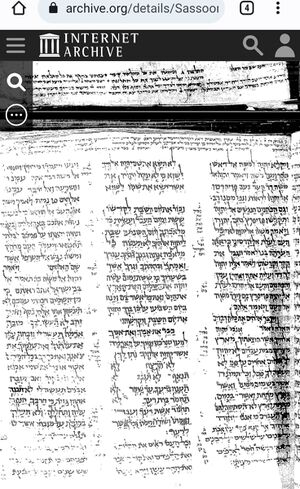
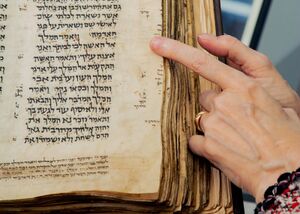
In 2023, the oldest nearly complete Hebrew Bible[27] headed to auction. It's about 1,100 years old.[28][29][30] The most expensive book.[27]
| “ | The Codex Sassoon, written out by a single scribe on nearly 400 parchment sheets, stabilized and preserved the text of the Hebrew Bible as we know it today.[28] | ” |
| “ | ...The estimate of the “beginning of the 10th century” and possibly “end of the 9th century” for the date of the Codex Sassoon is thus based on subtle changes in the way the Hebrew script developed, indicating its window of completion. Test results of carbon dating of the Codex Sassoon, performed prior to the upcoming auction, confirm a similar range for its completion in the late 9th or early 10th centuries... While biblical scrolls used in synagogue services contain only the Hebrew letters, the Sassoon Codex contains vowels, musical notes and other symbols, collectively known as the “Masorah” or “tradition.”
The information contained in the Sassoon Codex and similar works was essential for standardizing the text of the Hebrew Bible. There are exactly 79,976 words in the Hebrew Bible and over the course of thousands of years a small number of disputes naturally arose over each word’s exact spelling and pronunciation, particularly in the later works of the Hebrew Bible. Hebrew words as written in biblical scrolls without punctuation marks can be pronounced in multiple ways with several plausible meanings, and many common Hebrew words can sound the same with multiple spellings. How can a state of confusion, with multiple competing versions of the Hebrew Bible, be avoided? The "Masoretes," a group of largely anonymous sages, performed the important and meticulous task of ensuring that each copy of the Hebrew Bible would have the exact same spelling, pronunciation and even musical pitch. There are thousands of “Masoretic rules” that were developed in roughly the 6th to 9th centuries, passed along from generation to generation, in order to ensure that the biblical text continued to be preserved without disagreement before the age of printing.[27] |
” |
New Testament[edit]
There are 127 papyri,[31] 318 and 2882 Majuscule and Miniscule MSS, and 2436 Lectionary MSS that make up the at least 5,762 manuscripts of the Greek New Testament (current as of 2008).[32][33] There are at least 24,000 manuscripts for the New Testament in all, including at least 8,000 in the Latin Vulgate and 1,000 in Syrian, Coptic, Armenian, Gothic, and Ethiopic,[34] with 99.5% internal consistency.[22][35] More manuscripts are being discovered and translated all the time.[36]
List of New Testament codexes[edit]
The following are largely complete New Testament documents, as opposed to papyri which tend to be fragmentary, prior to 500 A.D.
| Name | Date | Content | Type | Institution |
|---|---|---|---|---|
| copSA (Sahidic Coptic) | 250 A.D. | entire New Testament except Revelation | Version | |
| syrS (Sinaitic Syriac) | 300 A.D. | much of the Gospels | Version | |
| syrC (Curetonian Syriac) | 300 A.D. | Matthew 1:1-8:22; 10:32-23:25; Mark 16:17-20; John 1:1-42; 3:6-7:37; 14:10-29; Luke 2:48-3:16; 7:33-15:21; 17:24-24:44 | Version | |
| GA01 (Codex Sinaiticus) | 350 A.D. | entire New Testament | Uncial | British Library in London |
| GA03 (Codex Vaticanus) | 350 A.D. | entire New Testament except I Tim. through Phlm. & Heb 9:14 through Rev.; entire Old Testament except Gen. 1:1-46:28 & Ps. 105:27-137:6 | Uncial | Vatican Library in Rome |
| GA032 (Codex Washingtonianus) | 400 A.D. | all four Gospels except Mark 15:13-38 & John 14:26-16:7 | Uncial | Freer Gallery, Smithsonian Institution, Washington |
| GA 04 (Codex Ephraemi) | 425 A.D. | most of New Testament, parts of Old Testament | Uncial | Bibliothèque nationale de France |
| GA 02 (Codex Alexandrinus) | 450 A.D. | virtually complete Old and New Testaments | Uncial | British Library in London |
| GA 05 (Codex Bezae) | 450 A.D. | Gospels except Mt. 1:1-20; 6:20-9:2; 27:2-12 & John 1:16- 3:26; Acts except 8:29-10:14 & 21:2-10,16-18; 22:10-20,29-end; James through Jude | Uncial | Cambridge University Library |
| GA 16 (Codex Freerianus) | 450 A.D. | most of Paul's epistles and most of Hebrews | Uncial | Freer Gallery, Smithsonian Institution, Washington |
List of New Testament manuscripts[edit]
The following is a list of early New Testament manuscripts, by date, prior to 300 A.D.
KEY:
- A. Date means "Accepted Date", the typical consensus for the document.
- C. Date means "Controversial Date", newer dates viewed as controversial.
| Name | A. Date | Content | Type | Institution | C. Date |
|---|---|---|---|---|---|
| P52 | 125 A.D. | John 18:31-33; 18:37-38 | Papyrus | John Rylands University Library | 100 A.D. |
| P104, also P.Oxy.LXIV 4404[37] | 150 A.D. | Matthew 21:34-37,43,45 | Papyrus | Ashmolean Museum | |
| P90 | 163 A.D. | John 18:36-19:7 | Papyrus | Ashmolean Museum | |
| P64+67 | 163 A.D. | Mt. 3:9,15; 5:20-22,25-28; 26:7-8,10,14-15,22-23,31-33 | Papyrus | Magdalen College | 60 A.D. |
| P98 | 175 A.D. | Revelation 1:13-2:1 | Papyrus | Institut Français d'Archéologie Orientale | |
| GA 0189 | 200 A.D. | Acts 5:3-21 | Uncial | Berlin | |
| P46[38] | 200 A.D. | most of Pauline epistles, Hebrews | Papyrus | Chester Beatty Library; University of Michigan | 85 A.D. |
| P4 | 200 A.D. | Lk. 1:58-59,62-80; 2:1,6,7; 3:8-38; 4:1,2,29-32,34,35; 5:3-8,30-39; 6:1-16 | Papyrus | Bibliothèque Nationale de France | 100 A.D. |
| P32 | 200 A.D. | Titus 1:11-15; 2:3-8 | Papyrus | John Rylands University Library | 175 A.D. |
| P66 | 200 A.D. | most of John | Papyrus | Institut für Altertumskunde | 125 A.D. |
| P77 | 200 A.D. | Matthew 23:30-39 | Papyrus | Ashmolean Museum | 150 A.D. |
| P103, also P.Oxy.LXIV 4403[39] | 200 A.D. | Matthew 13:55-56; 14:3-5 | Papyrus | Ashmolean Museum | |
| P23 | 225 A.D. | James 1:10-12, 15-18 | Papyrus | University of Illinois, Urbana | |
| GA 0220 | 250 A.D. | Romans 4:23-5:3; 5:8-13 | Uncial | London/Oslo | |
| P1 | 250 A.D. | Matthew 1:1-9,12-20 | Papyrus | Museum of Archaeology and Anthropology | |
| P5 | 250 A.D. | John 1:23-31,33-41; 16:14-30; 20:11-17,19,20,22-25, 20:19-25 | Papyrus | British Library | |
| P9 | 250 A.D. | I John 4:11-12,14-17 | Papyrus | Houghton Library | |
| P12 | 250 A.D. | Hebrews 1:1 | Papyrus | Pierpont Morgan Library | |
| P15 | 250 A.D. | I Corinthians 7:18-40; 7:40-8:1-4 | Papyrus | Egyptian Museum | |
| P20 | 250 A.D. | James 2:19-25; 2:26-3:9 | Papyrus | Princeton University Library | |
| P22[40] | 250 A.D. | John 15:25-27; 16:1-2,21-32 | Papyrus | Glasgow University Library | |
| P27[41] | 250 A.D. | Romans 8:12-22,24-27,33-39, 9:1-3,5-9 | Papyrus | Cambridge University Library | |
| P28 | 250 A.D. | John 6:8-12, 17-22 | Papyrus | Pacific School of Religion | |
| P29 | 250 A.D. | Acts 26:7-8, 20 | Papyrus | The Bodleian Library | |
| P30 | 250 A.D. | I Thessalonians 4:12-13,16-17; 5:3,8-10,12-18,25-28; II Thess 1:1-2 | Papyrus | Ghent University Library | |
| P39 | 250 A.D. | John 8:14-22 | Papyrus | Ambrose Swasey Library | |
| P40 | 250 A.D. | Romans 1:24-27,31-32; 2:1-3; 3:21-31; 4:1-8; 6:4-5,16; 9:16-17,27 | Papyrus | Institut fur Papyrologie der Univ. | |
| P45[42] | 250 A.D. | much of Mark, Luke, John, & Mt. 20:24-32; 21:13-19; 25:41-46; 26:1-39 | Papyrus | Österreichische Nationalbibliothek | 150 A.D. |
| P47[43] | 250 A.D. | Revelation 9:10-11; 13:11, 14-16; 15:16,17-17:2:2 | Papyrus | Chester Beatty Library | |
| P49[44] | 250 A.D. | Ephesians 4:16-29,31-32, 5:1-13 | Papyrus | Yale U. Library | |
| P53 | 250 A.D. | Matthew 26:29-40; Acts 9:33-43;10:1 | Papyrus | Ashmolean Museum | |
| P65 | 250 A.D. | I Thessalonians 1:3-2:1,6-13 | Papyrus | Ashmolean Museum | |
| P69 | 250 A.D. | Luke 22:41,45-48,58-61 | Papyrus | Ashmolean Museum | |
| P70 | 250 A.D. | Matt 2:13-16,22-3:1; 11:26-27; 12:4-5; 24:3-6,12-15 | Papyrus | Ashmolean Museum | |
| P75[45] | 250 A.D. | much of Luke & half of John | Papyrus | ||
| P80 | 250 A.D. | John 3:34 | Papyrus | Barcelona | |
| P87[46] | 250 A.D. | Philemon 1:13-15,24-25 | Papyrus | Institut für Altertumskunde | 125 A.D. |
| P91[47] | 250 A.D. | Acts 2:30-37,46-47; 3:1-2 | Papyrus | North Ryde, Australia | |
| P95 | 250 A.D. | John 5:26-29, 36-38 | Papyrus | Florence | |
| P101, also P.Oxy.LXIV 4401[48] | 250 A.D. | Matthew 3:10-12,16-4:3 | Papyrus | Ashmolean Museum | |
| P106 | 250 A.D. | John 1:29-35,40-46 | Papyrus | Ashmolean Museum | |
| P107[49] | 250 A.D. | John 17:1-2,11 | Papyrus | Ashmolean Museum | |
| P108[50] | 250 A.D. | John 17:23-24, 18:1-5 | Papyrus | Ashmolean Museum | |
| P109[51] | 250 A.D. | John 21:18-20, 23-25 | Papyrus | Ashmolean Museum | |
| P111[52] | 250 A.D. | Luke 17:11-13, 22-23 | Papyrus | Ashmolean Museum | |
| P113[53] | 250 A.D. | Romans 2:12-13, 29 | Papyrus | Ashmolean Museum | |
| P114[54] | 250 A.D. | Hebrews 1:7-12 | Papyrus | Ashmolean Museum | |
| P118 | 250 A.D. | Romans 15:26-27,32-33; 16:1,4-7,11-12 | Papyrus | Univ., Seminar für Ägyptologie | |
| P119 | 250 A.D. | John 1:21-28,38-44 | Papyrus | Ashmolean Museum | |
| P121 | 250 A.D. | John 19:17-18; 25-26 | Papyrus | Ashmolean Museum | |
| P48 | 275 A.D. | Acts 23:11-17, 24-29 | Papyrus | Bibl. Medicea Laurenziana | |
| GA 0171 | 300 A.D. | Matt 10:17-23, 25-32; Luke 22:44-56, 61-64 | Uncial | Staatl. Mus. | |
| P38 | 300 A.D. | Acts 18:27-28; 19:1-6,12-16 | Papyrus | University of Michigan | |
| P7 | 300 A.D. | Luke 4:1-3 | Papyrus | Centr. Nauch. Bibl. | |
| P13 | 300 A.D. | Hebrews 2:14-18; 3:1-19; 4:1-16; 5:1-5; 10:8-22,29-39; 11:1-13,28-40; 12:1-17 | Papyrus | British Library | |
| P16 | 300 A.D. | Philemon 3:9-17; 4:2-8 | Papyrus | Egyptian Mus. | |
| P18 | 300 A.D. | Revelation 1:4-7 | Papyrus | British Library | |
| P37[55] | 300 A.D. | Matthew 26:19-52 | Papyrus | University of Michigan | |
| P72 | 300 A.D. | 1 Peter 1:1-25; 2:1-25; 3:1-22; 4:1-19; 5:1-14; 2 Peter 1:1-21; 2:1-22; 3:1-18; Jude 1-25 | Papyrus | Bibl. Bodmeriana, Vatican Library | |
| P78 | 300 A.D. | Jude 4-5,7-8 | Papyrus | Ashmolean Museum | |
| P92 | 300 A.D. | Ephesians 1:11-13,19-21; II Thessalonians 1:4-5,11-12 | Papyrus | Egyptian Mus. | |
| P100[56] | 300 A.D. | James 3:13-4:4, 4:9-5:1 | Papyrus | Ashmolean Museum | |
| P102, also P.Oxy.LXIV 4402[57] | 300 A.D. | Matthew 4:11-12,22-23 | Papyrus | Ashmolean Museum | |
| P115[58] | 300 A.D. | much of Revelation | Papyrus | Ashmolean Museum | |
| P125 | 300 A.D. | 1 Peter 1:23-2:5; 2:7-12 | Papyrus | Ashmolean Museum | |
| GA 0162 | 300 A.D. | John 2:11-22 | Uncial | New York | |
| GA 0312 | 300 A.D. | Luke 5:23-24,30-31; 7:9,17-18 | Uncial | Corpus Christi College | |
| l | |||||
| Sources: | |||||
| * David Palmer, Table of NT Greek Manuscripts BibleTranslation.ws[59] | |||||
| * CSNTM, Manuscripts (Includes hundreds of manuscripts for public viewing archived with high-res. digital photography)[60] | |||||
| * INTF, Continuation of the Manuscript List[61] | |||||
| * Matt Baker, Oldest New Testament Manuscripts, UsefulCharts.com[62] | |||||
| * Timothy Seid, A Table of Greek Manuscripts. Interpreting Ancient Manuscripts.[63] | |||||
| * Wieland Willker, Complete List of Greek NT Papyri[64] | |||||
| * Peter M. Head, Early Greek Bible Manuscript Project: NT Mss. on Papyrus[65] | |||||
| * Wikipedia. List of New Testament Papyri[66] | |||||
References[edit]
- ↑ McDowell, Josh (1977). More Than a Carpenter, p. 48. Tyndale House Publishers.
- ↑ CNN (2008, October 30). "Archeologist Finds 3,000-Year Old Hebrew Text.
Deem, R. (2010, January 12). "10th Century Hebrew Inscription on Pottery from Khirbet Qeiyafa, Israel Confirms Biblical Claims." GodandScience.org. - ↑ Caesar, S. (2010, January 6). "The Blessing of the Silver Scrolls." BibleArchaeology.org. Published in Bible and Spade, Spring 2006.
Barkay, G., Vaughan, A.G., Lundberg, M.J., & Zuckerman, B. (2004). "The Amulets from Ketef Hinnom: A New Edition and Evaluation." The American Schools of Oriental Research.
Bible History Daily. "The Greatest Finds in Biblical Archaeology." Biblical Archaeological Society. - ↑ The Digital Dead Sea Scrolls. "The Great Isaiah Scroll."
- ↑ 5.0 5.1 Bonani, G., Ivy, S., et. al. (1992). "Radiocarbon Dating of Fourteen Dead Sea Scrolls." Radiocarbon, Vol. 34, No. 3, pp. 843-849.
- ↑ Burkitt, F.C. "The Hebrew Papyrus of the Ten Commandments." The Jewish Quarterly Review, 15(1903), 392-408.
- ↑ Williams, Tyler F. (2009, July 15). "Qumran Psalms Scroll (11Q5/11QPs-a)." BiblicalStudies.ca.
- ↑ P.J. Parsons (1983). P.Oxy.L 3522 LXX Job 42:11-12." Oxyrhynchus Online. Papyrology Websites.
- ↑ K. Luchner (1998). P.Oxy.LXV 4443 LXX, Esther E16-9.3." Oxyrhynchus Online. Papyrology Websites.
- ↑ Walch, Stephen (2011, September 28). "Dead Sea Scrolls." The Way to Yahuweh.
- ↑ Papyri.info. Oxyrhynchus. Columbia University. Accessed July 15, 2012.
- ↑ Rives, Stephen (2011, September 27). Old Testament Manuscripts and 18 Tiqqune Sepherim EastSide Church of the Cross. Also Looking Under the Hood: Origins of the Bible Slideshow.
- ↑ Library of Congress. Scrolls from the Dead Sea: The Ancient Library of Qumran and Modern Scholarship. www.Loc.gov.
- ↑ John Rylands University Library. Bible Greek or Hebrew. Image Collections.
- ↑ Israel Museum The Digital Dead Sea Scrolls.
- ↑ Papyrology Websites, Oxyrhynchus Online. Browse By Date.
- ↑ Wikipedia. Dead Sea Scrolls Accessed April 17, 2012.
- ↑ Martinez, F.G. & Tigchelaar, E.J.C. (1998). "The Dea Sea Scrolls Study Edition." Vol. 2. Index (contains listing of Dead Sea Scrolls). Wm. B. Eerdman's Publishing Company.
- ↑ Wikipedia. Oxyrhynchus Papyri Accessed July 15, 2012.
- ↑ Sussman, Ayala & Peled, Ruth (1993). "The Dead Sea Scrolls." Jewish Virtual Library.
- ↑ 21.0 21.1 Dead Sea Scrolls Foundation. "About the Scrolls."
- ↑ 22.0 22.1 Boa, Kenneth. "How Accurate is the Bible?" Bible.org.
- ↑ Lawler, Andrew (2010, January). "Who Wrote the Dead Sea Scrolls?," pg. 2. Smithsonian Magazine.
- ↑ Kent, Donna. "RadioCarbon Dating of Dead Sea Scrolls." Retrieved from David W. Brooks, University of Nebraska website.
- ↑ The Israel Museum. "The Digital Dead Sea Scrolls: Discovery." Jerusalem. Accessed April 17, 2012.
- ↑ Davies, Philip R. (2009). "Dead Sea Scrolls." Encyclopaedia Britannica, History.
- ↑ 27.0 27.1 27.2 E. Freedman, Codex Sassoon: World’s Most Expensive Book for Sale, Aish, Feb 19, 2023
- ↑ 28.0 28.1 Jennifer Schuessler, Oldest Nearly Complete Hebrew Bible Heads to Auction, The New York Times, Feb 15, 2023.
- ↑ Codex Sassoon: The Earliest Most Complete Hebrew Bible, Sotheby's.
- ↑ 1,100-Year-Old Hebrew Bible, Missing Only a Few Chapters of Genesis, Could Fetch Up to $50 Million at Auction, Artnet, Feb 16, 2023.
- ↑ Wallace, Daniel B. (2012, February 10). "Earliest Manuscript of the New Testament Discovered?." The Center for the Study of New Testament Manuscripts.
- ↑ Welte, Michael (2008). "Kurzgefasste Liste der Griechischen Handschriften des NT." Quoted by Wieland Willker in "Update-list of Greek NT Uncials."
- ↑ Wallace, Daniel B. (2007). "Greek New Testament Manuscripts Discovered in Albania." Bible.org.
- ↑ Williams, Jimmy (1995). "Are the Biblical Documents Reliable?" Probe Ministries.
- ↑ Slick, Matt. "Manuscript Evidence for Superior New Testament Readability." Christian Apologetics and Research Ministry.
- ↑ Bruce Metzger and Bart Ehrman, The Text of the New Testament: Its Transmission, Corruption and Restoration (Oxford University Press, Fourth Edition 2005), pg. 50
- ↑ J. David Thomas. "P.Oxy. LXIV 4404." POxy Papyrus Web. The Center for Study of Ancient Documents. Stelios Ioannou School for Research in Classical and Byzantine Studies, Oxford.
The Center for the Study of New Testament Manuscripts. "Manuscript P104." - ↑ The Center for the Study of New Testament Manuscripts. "Manuscript P46."
- ↑ J. David Thomas. "P.Oxy. LXIV 4403." POxy Papyrus Web. The Center for Study of Ancient Documents. Stelios Ioannou School for Research in Classical and Byzantine Studies, Oxford.
The Center for the Study of New Testament Manuscripts. "Manuscript P103." - ↑ The Center for the Study of New Testament Manuscripts. "Manuscript P22."
- ↑ The Center for the Study of New Testament Manuscripts. "Manuscript P27."
- ↑ The Center for the Study of New Testament Manuscripts. "Manuscript P45."
- ↑ The Center for the Study of New Testament Manuscripts. "Manuscript P47."
- ↑ The Center for the Study of New Testament Manuscripts. "Manuscript P49."
- ↑ The Center for the Study of New Testament Manuscripts. "Manuscript P75."
- ↑ The Center for the Study of New Testament Manuscripts. "Manuscript P87."
- ↑ The Center for the Study of New Testament Manuscripts. "Manuscript P91."
- ↑ J. David Thomas. "P.Oxy. LXIV 4401." POxy Papyrus Web. The Center for Study of Ancient Documents. Stelios Ioannou School for Research in Classical and Byzantine Studies, Oxford.
The Center for the Study of New Testament Manuscripts. "Manuscript P101." - ↑ The Center for the Study of New Testament Manuscripts. "Manuscript P107."
- ↑ The Center for the Study of New Testament Manuscripts. "Manuscript P108."
- ↑ The Center for the Study of New Testament Manuscripts. "Manuscript P109."
- ↑ The Center for the Study of New Testament Manuscripts. "Manuscript P111."
- ↑ The Center for the Study of New Testament Manuscripts. "Manuscript P113."
- ↑ The Center for the Study of New Testament Manuscripts. "Manuscript P114."
- ↑ The Center for the Study of New Testament Manuscripts. "Manuscript P37."
- ↑ The Center for the Study of New Testament Manuscripts. "Manuscript P100."
- ↑ J. David Thomas. "P.Oxy. LXIV 4402." POxy Papyrus Web. The Center for Study of Ancient Documents. Stelios Ioannou School for Research in Classical and Byzantine Studies, Oxford.
The Center for the Study of New Testament Manuscripts. "Manuscript P102." - ↑ The Center for the Study of New Testament Manuscripts. "Manuscript P115."
- ↑ Palmer, David. Table of NT Greek Manuscripts BibleTranslation.ws
- ↑ The Center for Study of New Testament Manuscripts. "Manuscripts."
- ↑ INTF. "Continuation of the Manuscript List." University of Münster.
- ↑ Baker, Matt (2011, December 15). "Oldest New Testament Manuscripts." UsefulCharts.com.
- ↑ Seid, Timothy. A Table of Greek Manuscripts. Interpreting Ancient Manuscripts.
- ↑ Willker, Wieland. "Complete List of Greek NT Papyri."
- ↑ Head, Peter M. "Early Greek Bible Manuscript Project: NT Mss. on Papyrus."
- ↑ Wikipedia. List of New Testament Papyri Accessed April 17, 2012.
See also[edit]
Categories: [Bible] [Bible Study] [Biblical Documents]
↧ Download as ZWI file | Last modified: 02/27/2023 07:12:36 | 13 views
☰ Source: https://www.conservapedia.com/Bible_manuscript_evidence | License: CC BY-SA 3.0
 ZWI signed:
ZWI signed: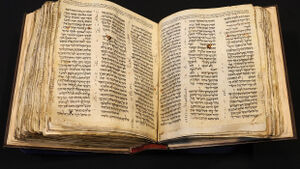
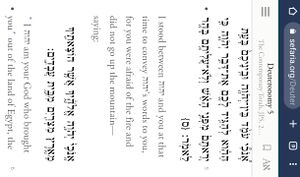
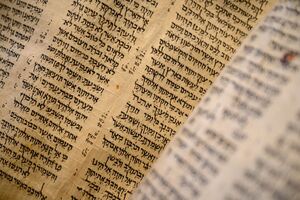
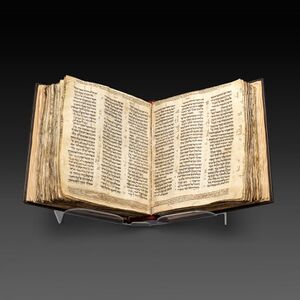
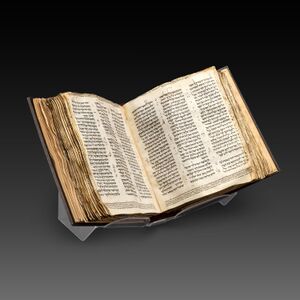
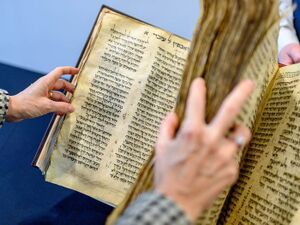
 KSF
KSF